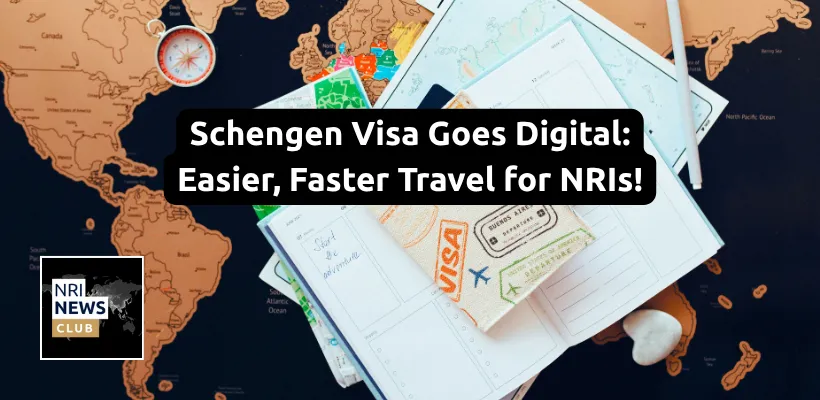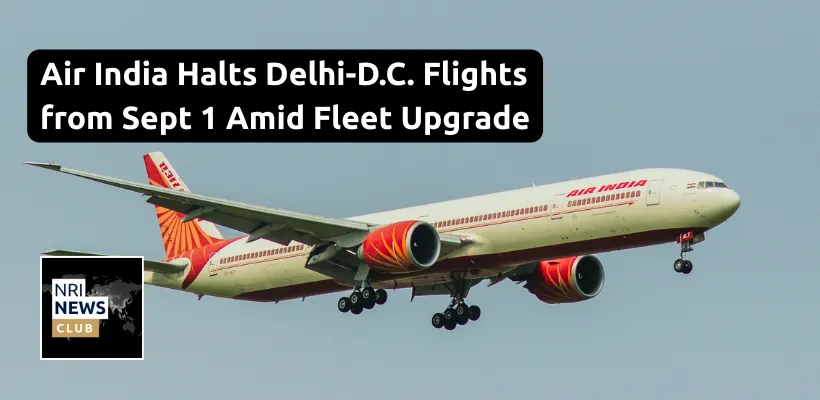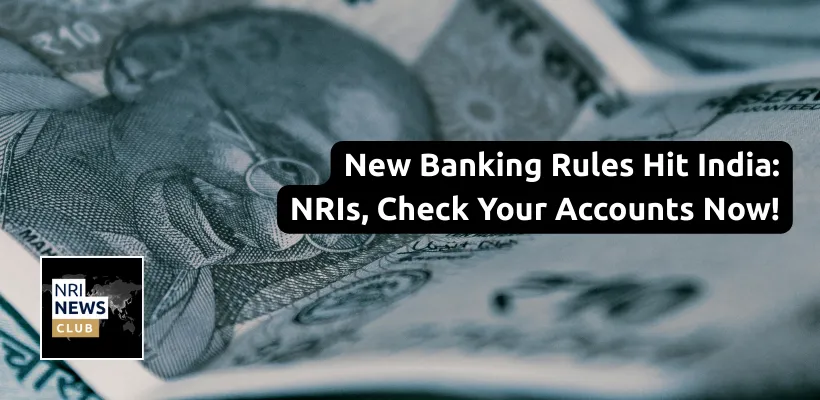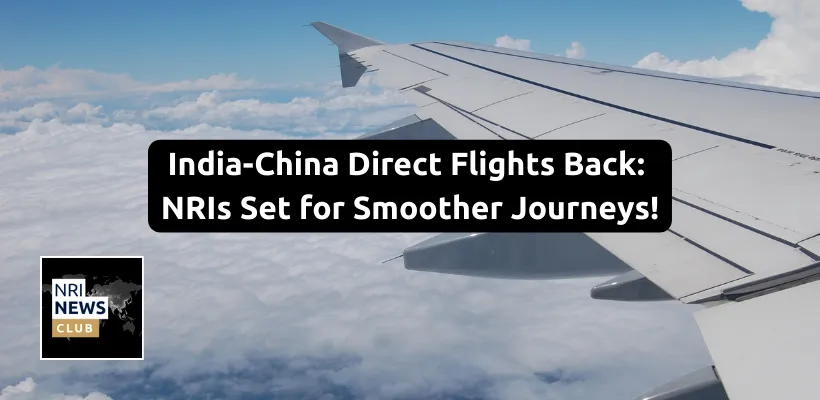For millions of Non-Resident Indians (NRIs) and Indian nationals dreaming of exploring Europe’s iconic landmarks, attending business meetings in Berlin, or visiting family in Paris, securing a Schengen Visa has often been a daunting task. The paperwork, long queues at consulates, and high rejection rates have tested the patience of many. However, a revolutionary change is on the horizon: the European Union (EU) is transitioning to a fully digital Schengen Visa system by 2028, with pilot programs already underway. This transformation promises to make travel to Europe easier, faster, and more secure for Indian travelers. Here’s everything NRIs and Indians need to know about this game-changing development.
What Is the Schengen Visa, and Why Does It Matter?
The Schengen Visa is a short-term visa that allows non-EU nationals to travel freely across 29 European countries, including popular destinations like France, Germany, Italy, Spain, and non-EU members such as Iceland, Norway, and Switzerland. Covering over four million square kilometers and a population of 450 million, the Schengen Area is a cornerstone of seamless travel in Europe. For NRIs and Indians, this visa is essential for tourism, business, or visiting family and friends, allowing stays of up to 90 days within a 180-day period.
In 2024 alone, Indian travelers submitted over 1.1 million Schengen Visa applications, with countries like France and Germany receiving the highest volumes. However, the process has been criticized for its complexity, long processing times, and high rejection rates: nearly 15% of Indian applications were denied last year, costing applicants approximately ₹136 crore in non-refundable fees. The move to a digital system aims to address these challenges and transform the experience for Indian travelers.
The Digital Schengen Visa: What’s Changing?
The EU is phasing out the traditional visa sticker, which was physically pasted into passports, in favor of a secure, encrypted 2D barcode. This digital visa, accessible via email or a mobile device, will be linked to a centralized EU database, allowing immigration officers to instantly verify a traveler’s visa status at border checkpoints. The transition began with a successful pilot during the 2024 Paris Olympics, where France issued 70,000 digital visas, replacing stickers with barcodes for a smoother, more secure process.
By 2026, the EU plans to launch a centralized online application platform, enabling travelers to:
- Upload documents such as passports, itineraries, and proof of accommodation digitally.
- Pay visa fees online using cards or digital payment methods like UPI (where accepted).
- Track application status in real-time.
- Receive a digital visa in the form of a secure barcode, eliminating the need for physical stickers.
The full rollout is expected by 2028, with pilot programs potentially starting in high-volume countries like India as early as late 2025. This shift aligns with the EU’s broader digital agenda, including the introduction of the Entry/Exit System (EES) in October 2025, which will replace passport stamps with biometric checks, and the European Travel Information and Authorisation System (ETIAS) by 2026, which will require visa-exempt travelers to apply online before entering the Schengen Area.
How Will This Benefit NRIs and Indian Travelers?
The digital Schengen Visa system offers several advantages for NRIs and Indians, addressing longstanding pain points:
-
Streamlined Application Process: The centralized online platform will reduce paperwork, making it easier to submit documents and track applications from anywhere in the world. NRIs living in countries like the US, UAE, or Canada can apply without visiting an Indian consulate, provided they meet residency requirements.
-
Faster Processing Times: The digital system aims to cut down on administrative errors and delays, which have been a major issue for countries like Italy, Germany, and the Netherlands. With automated appointment allocation and real-time tracking, applicants can plan their trips with greater confidence.
-
Enhanced Security: The encrypted 2D barcode reduces the risk of visa fraud and theft associated with physical stickers. At border checkpoints, e-gate access with biometric screening will make entry smoother, especially for frequent travelers.
-
Multi-Entry and Longer-Validity Visas: Under the EU’s new “cascade” regime, Indian nationals with a strong travel history (having used two Schengen visas lawfully within three years) can now qualify for two-year or five-year multiple-entry visas. This is a significant boon for NRIs who frequently travel to Europe for business or family visits, reducing the need for repeated applications.
-
Cost and Time Savings: While the visa fee (€80 for adults, €40 for minors) remains unchanged, the digital process could lower ancillary costs like courier services or premium lounge fees at VFS Global centers. The ability to apply up to six months in advance also allows for better planning.
However, first-time applicants or those with new travel documents must still visit a consulate or VFS Global center in person to submit biometric data (fingerprints and photographs), which will remain valid for five years. This requirement ensures security but may pose a challenge for NRIs in regions with limited access to visa centers.
Challenges and Considerations
While the digitalization is a step forward, some challenges remain. The rejection rate for Indian applicants, which ranges from 15% to 25% depending on the country, underscores the need for strong documentation and financial clarity. The digital system may reduce errors, but visa officers will continue to scrutinize applications rigorously. NRIs and Indians are advised to:
- Apply early: Submit applications at least 15 days before travel, accounting for up to six days of logistics between VFS centers and consulates.
- Choose the correct embassy: Apply at the consulate of the country where you’ll spend the most time or your first entry point.
- Prepare thoroughly: Ensure all documents, including a valid passport (with at least three months’ validity post-departure), travel insurance, proof of accommodation, and a round-trip itinerary, are complete.
The high rejection rates have also sparked concerns about “reverse remittances” where visa fees generate significant revenue for European countries: €14 million from Indian applicants alone in 2024. The digital system aims to improve transparency, but travelers should remain vigilant about meeting all requirements to avoid financial losses.
A Brighter Future for Indian Travelers
The digital Schengen Visa system marks a historic overhaul, reflecting the EU’s commitment to leveraging technology for a more efficient and secure travel experience. For NRIs and Indian travelers, this change promises a smoother journey to Europe, whether it’s for a leisurely stroll through Paris, a business deal in Frankfurt, or a family reunion in Amsterdam. The introduction of longer-validity visas and the upcoming EES and ETIAS systems further signal a future where travel to Europe is more accessible and seamless.
As the EU gears up for this transition, NRIs and Indians should stay informed through official sources like the EU visa website (europa.eu) or VFS Global for updates on pilot programs and local implementation. With the demand for Schengen visas from India at an all-time high, over 1.1 million applications in 2024, early preparation and awareness will be key to making the most of this digital revolution.
Plan your European adventure today, and embrace the future of travel with the digital Schengen Visa!
Read more about India’s growing global mobility and its 59 visa-free destinations here.
Sources: European Commission, SchengenVisaInfo, Economic Times, Travel and Tour World, NDTV






